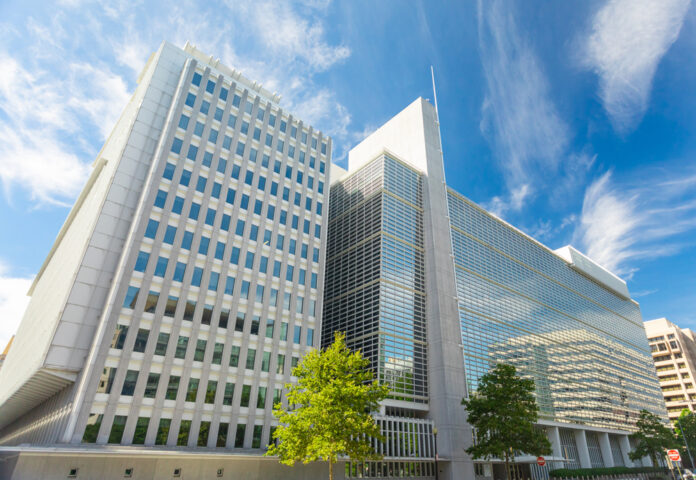The Philippine economy is seen to expand faster than expected this year, driven by the resilience of domestic demand amid high inflation, according to the latest economic report from the World Bank.
The Philippines Economic Update (PEU) June 2023 upgraded its forecast for the country’s gross domestic product (GDP) growth this year to 6 percent, up from previous estimates of 5.4 percent in December 2022 and 5.6 percent in April this year.
“Despite weak global conditions, we expect strong domestic demand to grow to 6 percent in 2023 and move to its growth potential over the medium term,” World Bank senior economist Ralph Van Doorn said in a briefing for the PEU on June 8.
Despite the upward revision, the report expects the Philippines to grow at a slower pace this year compared to last year’s 7.6 percent growth.
The revised forecast is at the low end of the government’s 6 percent to 7 percent growth target.
The World Bank expects the country’s growth to moderate to an average of 5.9 percent in both 2024 and 2025.
The report said the strong domestic demand this year is underpinned by consumer spending, which draws strength from the continuing jobs recovery and the steady flow of remittances.
Other growth drivers include fixed capital investment as a result of upbeat domestic activity and improved business confidence.
The services sector is also expected to support growth, while the recovery of international tourism will boost the expansion of transportation services, accommodation, and food services.
Aside from these, the amendments to the Public Service Act, Foreign Investment Act, and Retail Trade Liberalization Act are expected to encourage private investment and strengthen growth in the country over the medium term.
However, World Bank country director for Brunei, Malaysia, Philippines, and Thailand Ndiame Diop pointed out that persistent global and domestic risks could hinder recovery and poverty reduction.
“It is essential to sustain improvements in social protection to help families, especially the poor and vulnerable, cope with economic difficulties as the country navigates the global slowdown, budget constraints, high prices of basic commodities, and climate-related risks,” he said.
Diop said ensuring efficient delivery of social protection programs will require speeding up current government reforms, including the adoption of the national identification system for social protection delivery, updating the targeting system for identifying poor and vulnerable families, innovations in digital payment systems, and strengthening financing mechanisms and readiness for disaster response.
Global risks to the country’s economic outlook, meanwhile, include the possibility of rising global inflation, higher global interest rates, and an escalation of geopolitical tensions brought about by Russia’s invasion of Ukraine which could further cause a sharper-than-expected global slowdown that could hamper Philippine exports.
On the domestic front, the World Bank said high inflation remains a risk to the economic outlook due to several factors including natural disasters affecting food supply, the threat of El Niño that could further constrain food production, logistics and supply chain challenges, and pressure from domestic demand.
It also expects headline inflation to settle at 5.7 percent this year, above the Bangko Sentral ng Pilipinas’ 2 percent to 4 percent target this year, before declining to 3.6 percent in 2024 and 3 percent in 2025.
To address inflation, Doorn said reducing tariff and non-tariff barriers, enhancing domestic supplies and bolstering agriculture with extension services, seeds, and fertilizers are needed.
“In the face of escalating prices, a comprehensive strategy is needed to guarantee sufficient food for everyone. This entails a more productive agriculture and food system that is resilient to climate risks, serves all consumers, and competes effectively on both local and global markets,” he said.
The World Bank also cited the need to sustain investments in climate change initiatives, particularly in the agriculture sector.
Over the long term, the World Bank calls for a transition towards cleaner energy to further the country’s climate change mitigation efforts.
Meanwhile, the report said the Philippines expanded 6.4% year-on-year in the first quarter of 2023 on the back of robust domestic demand amid a subdued global environment and persistent risks.
This growth is lower than the 8 percent growth in the first quarter of 2022, but the economy grew by 1.1 percent from the previous quarter on a seasonally adjusted basis.
The country outperformed the growth of its regional peers such as Malaysia (5.6 percent), Indonesia (5 percent), Vietnam (3.3 percent), and Thailand (2.7 percent).
The services sector fueled growth in the first quarter, boosted by the revival of tourism and consumer spending on domestic services.
In contrast, the industry sector’s performance fell, as weak external demand, particularly for electronics, weighed heavily on exports, manufacturing, and mining.
Meanwhile, favorable weather conditions and the rebound in livestock production following bouts of African Swine Fever improved the agriculture sector’s contribution to growth.
World Bank lifts PH growth outlook to 6%
Related Stories







